One of the first decisions you’ll face when designing an aquarium is what type of substrate to use in the bottom of your tank.
This is more than just an aesthetic choice; it also impacts your aquarium’s set-up and longevity. Gravel is a popular option for freshwater aquariums, but sandy substrates may be a better choice in specific situations.
Here’s everything to consider when choosing between aquarium sand vs gravel!
Sand vs Gravel in Freshwater Aquariums
| Sand | Gravel |
|---|---|
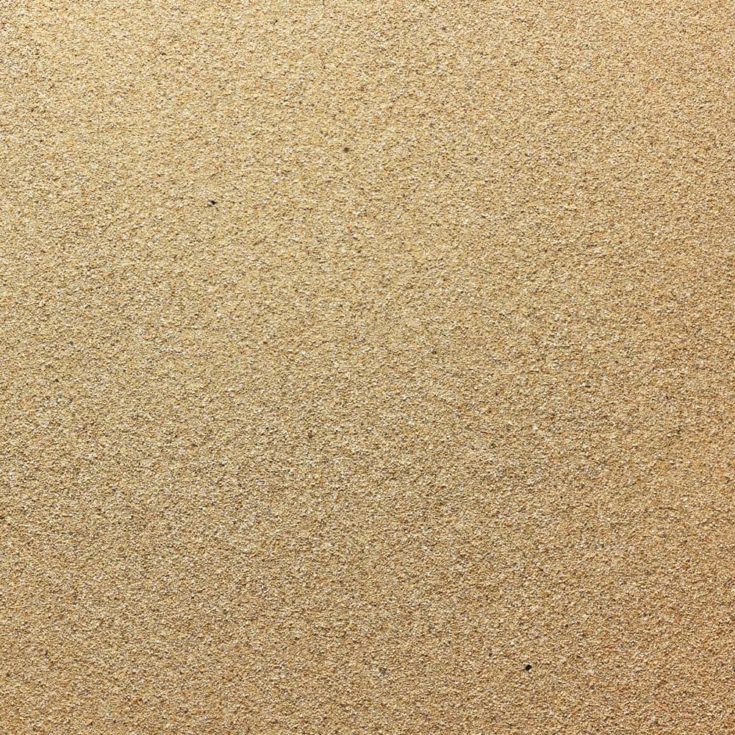 |
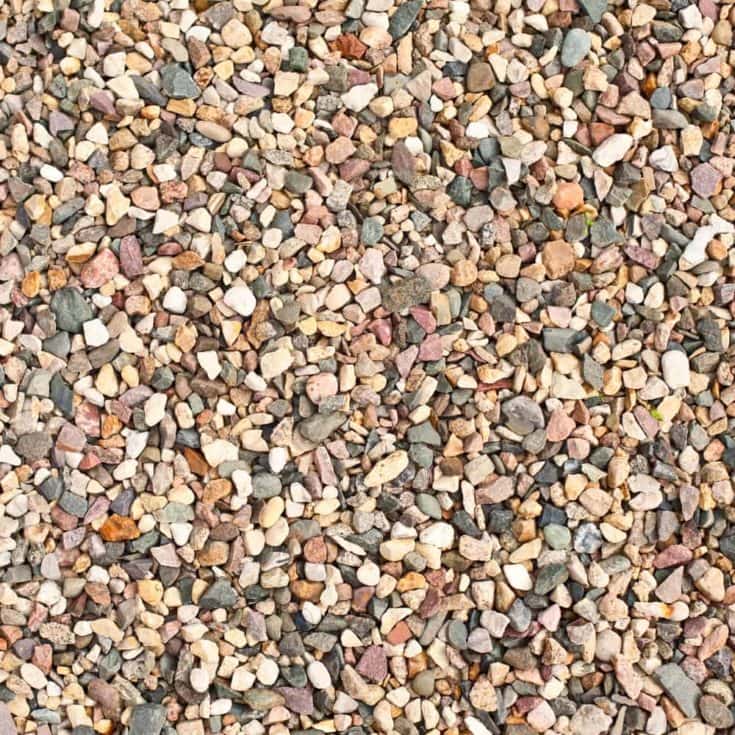 |
|
|
I remember setting up my first aquarium as a child. It was nothing fancier than a bowl with feeder goldfish and African dwarf frogs. There weren’t many commercial options for substrate in the 1980s, so it’s probably no surprise my 8-year-old self gravitated towards the bags of sparkling blue and green gravel.
These days we’re not limited to rainbow-hued bags of pea-sized gravel. You can create nearly any effect you want in your tank by choosing the right substrate. The material you choose impacts your aquarium set-up and whether your community of fish, invertebrates, and/or plants thrives or struggles.
While there are a variety of options for the bottom of your tank, including using potting soil, peat, or even leaving it bare, most aquarists opt for either gravel or a sandy bottom.
What are the differences between sand and gravel aquariums, and how do you decide which is the best substrate for your tank?
Overview of Aquarium Sand
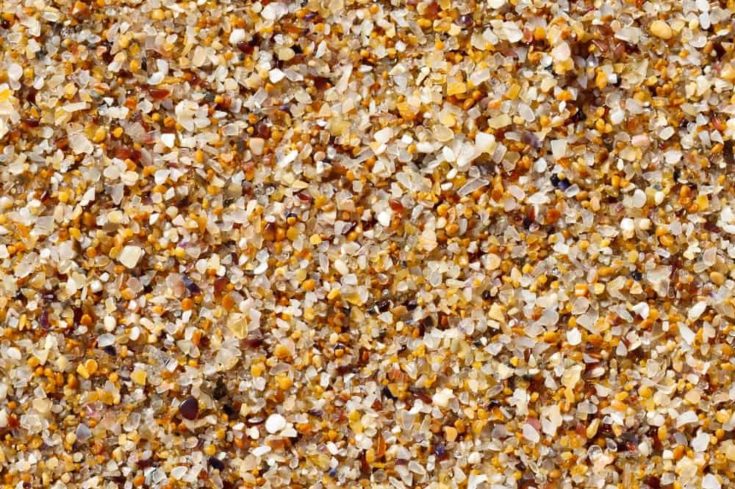
If you’re looking to recreate the smooth, tranquil appearance of a river bottom or lake, then aquarium sand might be your substrate of choice! Sand is an attractive and cost-effective option for the bottom of freshwater aquariums.
Sand comes in a variety of shades and colors and may be extremely fine or nearly as coarse as gravel. Natural sand is made up of small bits of shells, rocks, and/or organic materials with a diameter from 1/16 to 2mm.
Aquarium sand is usually made from crushed quartz, coral, or minerals such as aragonite, or is manufactured artificially from a silica base. Unlike natural sand, aquarium sand is uniform in size and shape and doesn’t have any sharp edges which could injure aquatic organisms.
Commercial products may be labeled as natural or river sand, and look similar to the sand you see along a waterfront. Unlike sand straight from the river, however, these bags of substrate have been processed and cleaned.
Types of Sand
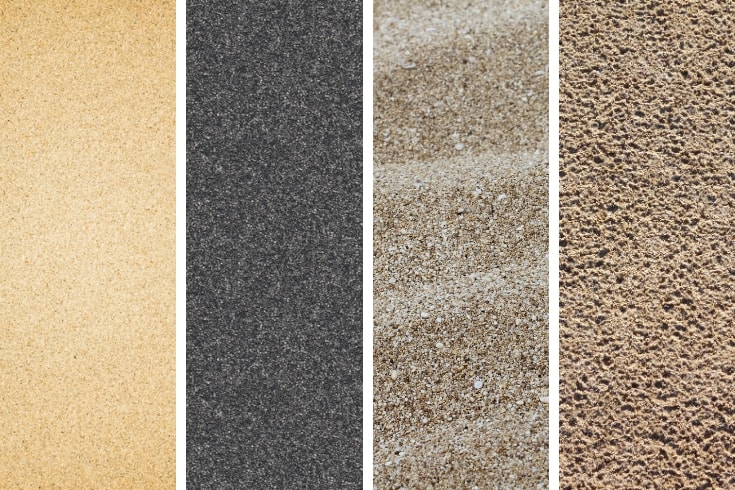
There is no formal way of categorizing sand other than by the size of the particles. If a substrate is between 1/16 to 2mm in diameter it’s called sand regardless of what it is composed of.
This can be confusing when you are searching for an appropriate aquarium substrate. Sand is used in many industries, from construction to manufacturing. Many sand products are not safe to use in an aquarium or are particularly unsuitable for freshwater tanks.
Here’s a list of the types of aquarium sand you’ll encounter and some notes on the benefits and drawbacks of each type:
- Live Sand—Described as “living” because they contain natural aquatic bacteria and other microorganisms, these bags come filled with either fresh or saltwater as well as substrate.
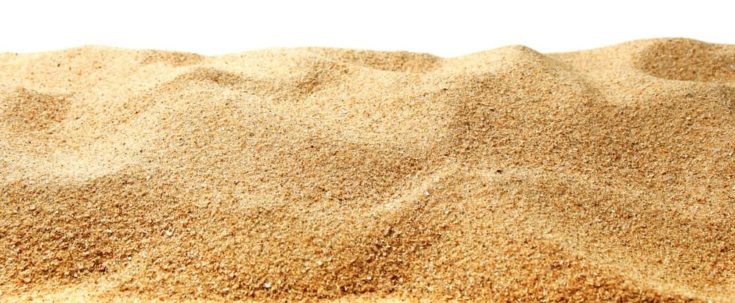
- May prevent “new tank syndrome” because bacteria break down waste products and maintain stable water chemistry
- No rinsing required before adding to your tank
- Typically more expensive than other options
- May not be suitable for freshwater community tanks, but some products work well for African cichlids and other aquatic species who prefer high water pH
- Product Recommendation: Pure Water Pebbles Bio Activ Live African Cichlid Sand
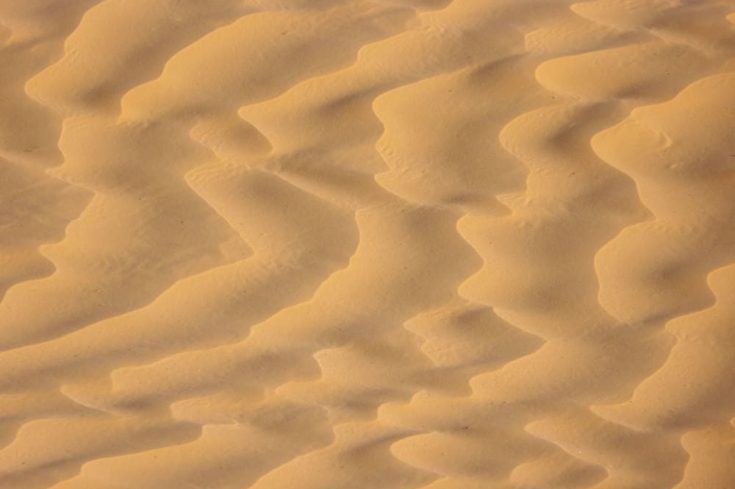
- Comes in a wide variety of natural shades to match your tank’s decor
- Most products are safe for use in freshwater aquariums and will not alter water chemistry
- Not specifically designed for aquariums and may cloud the water or clog filters even when rinsed
- Product Recommendation: Exo Terra Riverbed Sand
- Plant Sand—Not truly sand, as these products are usually made from iron-containing clay ground into small, sand-sized particles.
- Provides plants with the nutrients they need to thrive
- Porous clay particles allow water to flow through and healthy bacteria to flourish in your substrate
- Chemically inert and will not alter water chemistry
- Available in a limited number of colors
- Product Recommendation: Flourite Black Sand
- Pool Sand—Used in filtration systems, pool sand is a pale-colored natural product that’s been cleaned and sifted to a uniform size.
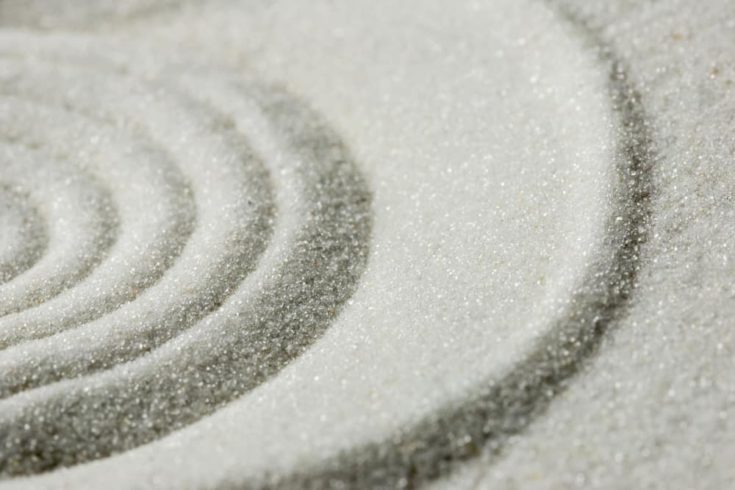
- Economical and easy to purchase in large quantities
- Heavier than play sand and less likely to cloud aquarium water and clog filters
- Chemically inert and will not alter water chemistry
- Not ideal for most planted tanks
- Limited range of shades and colors
- Artificial/Play Sand—Manufactured from silica, play sand comes in a wide variety of bright colors and natural shades.
- Economical and easy to purchase in large quantities
- Usually coated to prevent the color from flaking off
- Chemically inert and will not alter water chemistry
- Lighter than pool sand and may clog filtration systems
- Not ideal for planted tanks
Benefits of Using Sand
The primary benefit of using sand substrate in your freshwater aquarium is the smooth, natural appearance. I am very partial to the sandy-bottomed look myself.

Sand also prevents debris and waste products from sinking into your substrate. Instead, they remain on the top layer of sand where your filter intake can grab and remove them. You can also carefully vacuum the debris up with a hose.
Sand is a desirable substrate in tanks that house freshwater invertebrates, cichlids, or burrowing fish like Kuhli loaches.
Drawbacks to Using Sand
Sand isn’t the ideal substrate for every tank and imposes some limitations when used in freshwater aquariums.
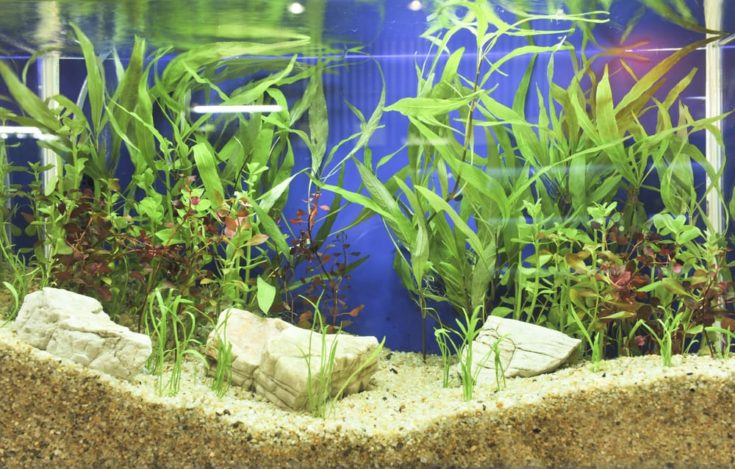
The small diameter of the sand grains prevents water from flowing through your substrate. This creates dead zones in your tank; areas where all the oxygen has been depleted. Having adequate filtration and wide water circulation in your tank will help prevent these zones from developing.
Sand also prevents vital nutrients from being absorbed by your plant’s roots, since it restricts water from flowing through your substrate.
If you’re planning on a planted tank then sand may be something to avoid. Many aquatic plants have shallow roots and don’t thrive when planted in the sand. You can mitigate these problems by using a product specifically designed for planted tanks.
Cleaning and Maintenance
Sandy substrates may present challenges for cleaning and maintaining your tank. Since the debris accumulates on top of the substrate, sandy bottoms often look dirtier than aquariums with gravel.
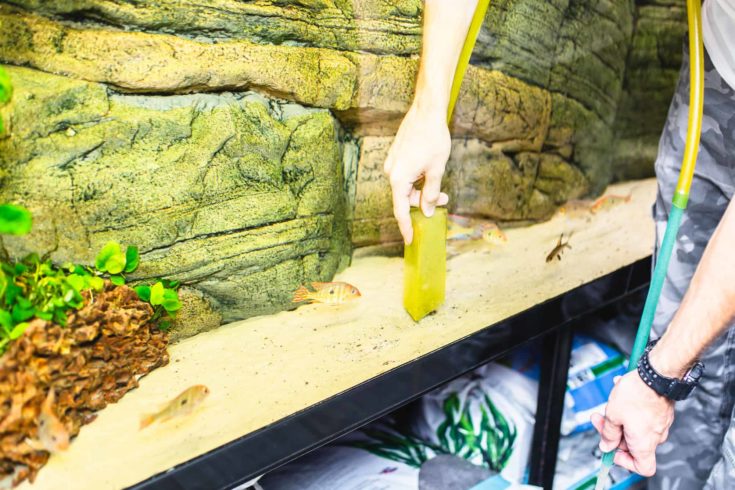
Sand is also very dusty and difficult to rinse clean, and the particles are so small and light that they may be easily sucked up by your filtration system or vacuum hose. Sand doesn’t work with undergravel filters either.
You may need to adjust the intake on your hanging or canister filter to prevent them from getting clogged with sand. It may also take a few days and a few rounds of water changes before your tank is clear after you add sand to it.
Plant and Animal Considerations
Sand is an ideal substrate for animals such as:
- African cichlids
- Freshwater loaches
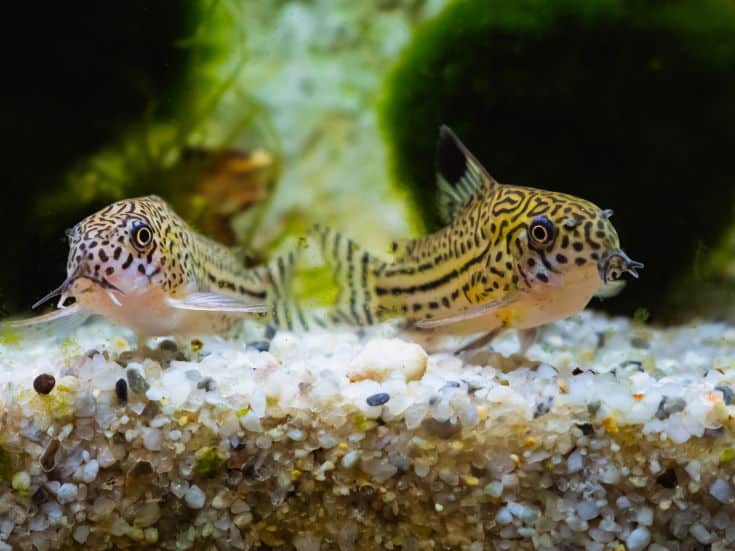
- Catfish and related species
- Freshwater invertebrates such as ghost shrimp
Many aquatic plants struggle in sandy substrates, but these species thrive:
Overview of Aquarium Gravel
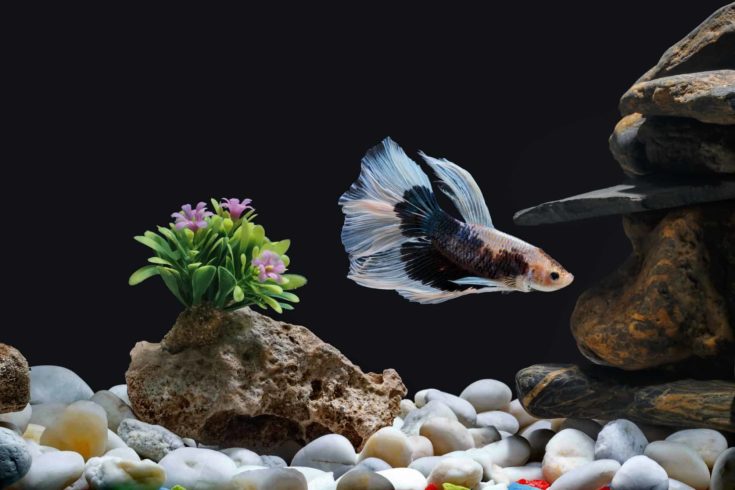
Gravel is the most common type of aquarium substrate and is an ideal product for most freshwater aquariums. When you opt for a gravel bottom you’ll have a wide variety of choices in size, color, and composition.
Gravel is typically made from rocks such as quartz or sandstone that have been crushed, smoothed and rounded into shape. Gravel can be nearly as fine as sand or appear as a collection of pebbles on the bottom of your tank.
Artificial aquarium gravel may be coated in a brightly-colored dye or paint and sealed to prevent the color from chipping away.
Other types of gravel are porous and allow bacteria and microorganisms to flourish in your substrate. The presence of this bacteria helps boost the nitrogen cycle and converts toxic waste products into a safer form.
Types of Gravel
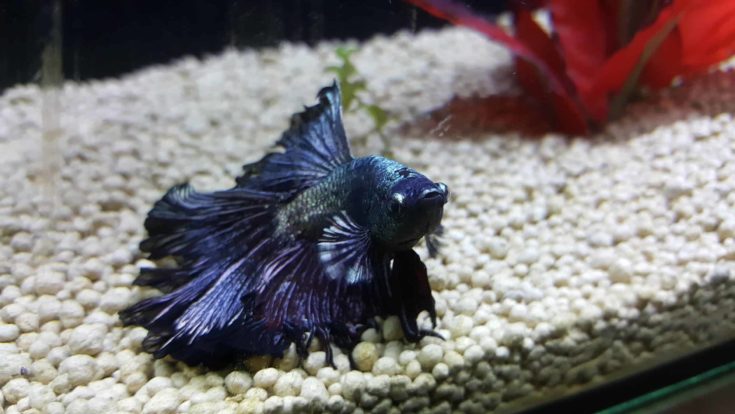
As with sand, there isn’t a formal definition for aquarium gravel. Generally, gravel ranges from just above 2mm to ¼ inch in diameter, which is about the size of a dried pea.
While you can buy gravel in bulk from construction supply companies, these types are not usually safe to use in aquariums. They may be contaminated with toxins or heavy metals and can poison your tank. Stick to products made especially for aquariums for the best results.
Here are the most common types of aquarium gravel and the benefits and drawbacks to each type:
- Live Gravel—Similar to live sand, these products come packed in freshwater and contain bacteria and microorganisms along with your substrate.
- Helps prevent new tank syndrome
- May contain nutrients to help planted tanks thrive
- No rinsing required before adding to your tank
- Suitable for most freshwater species
- Typically more expensive than other options
- Limited range of sizes and colors
- Product Recommendation: CaribSea Eco Complete Planted Black Aquarium Sand
- Natural/River Gravel—As the name indicates, these products are collected from riversides and dug out of gravel pits. They’re cleaned and processed to a roughly uniform size and shape. The tiny pebbles appear smooth but are usually not coated with a sealant.
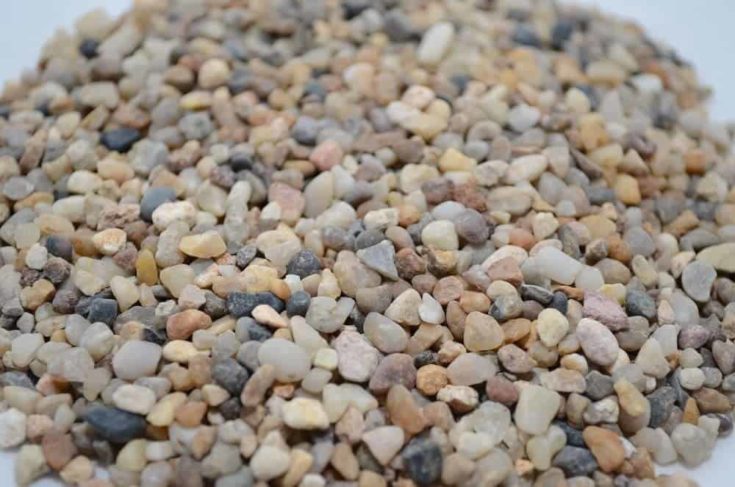
- Wide variety of natural colors and textures available
- Allows water to flow through the substrate, preventing dead zones
- Suitable for most freshwater animals
- Chemically inert and will not alter water quality
- Permits healthy bacteria to become established throughout your substrate
- Porous surface may also encourage blue-green algae outbreaks which can be tough to eliminate
- Product Recommendation: CNZ Aquarium Natural River Gravel
- Clay Gravel—Another option for planted freshwater aquariums is to use an iron and mineral-rich substrate made from clay.
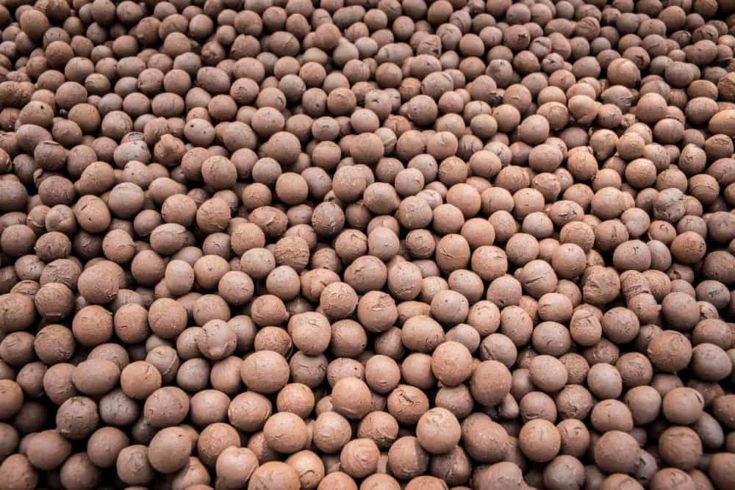
- Provides aquatic plants with the nutrients they need to thrive
- Allows water to circulate through and healthy bacteria to flourish in the substrate, preventing dead zones
- Suitable for most freshwater organisms
- Clay is chemically stable and will not alter water chemistry
- More expensive than many other options
- Often very dusty and requires a lot of rinsing before adding to the tank
- Porous surface may permit blue-green algae outbreaks
- Product recommendation: Flourite Black Clay Gravel
- Artificial Gravel—These products are typically manufactured from silica or an industrial resin. They may also be made from natural gravel covered in an acrylic coating.
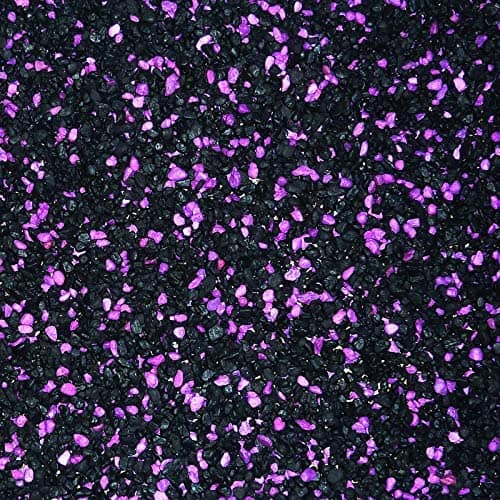
- Variety of colors and sizes to suit every preference, including glow-in-the-dark and gravel that glows under a black light.
- Suitable for most freshwater animals
- Little rinsing required before adding to the tank
- Chemically inert and won’t alter water chemistry
- Smooth surface isn’t ideal for healthy bacteria establishment
- Colors may fade or chip-away over time
- Product Recommendation: Nature’s Ocean Aquarium Gravel Blackberry Glo
Benefits of Using Gravel
Gravel is popular with freshwater aquarists for a few reasons.
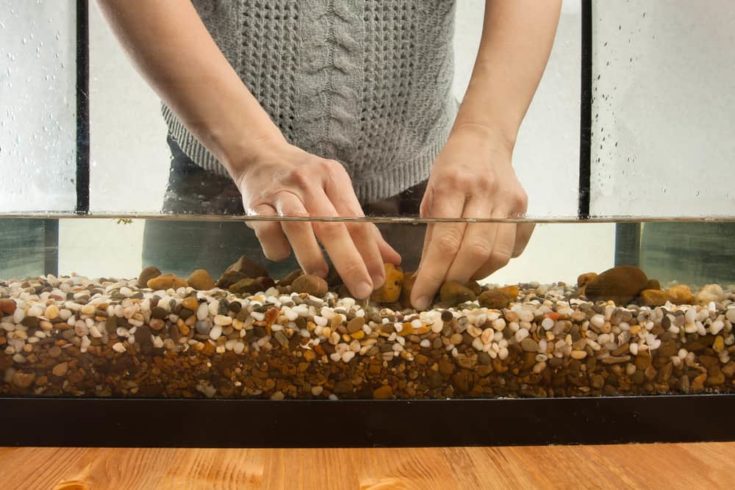
It’s ideal for raising nearly all freshwater fish and most invertebrates. A few of the burrowing species prefer sand, but most do fine on gravel if they have rocks and things to hide under. Gravel is also the ideal choice for growing aquatic plants since it allows roots to take in nutrients from the water flowing through the substrate. Even if you don’t opt for a plant-specific medium, it’s easier to maintain a planted gravel tank over a sandy-bottomed one.
Graveled aquariums encourage colonies of bacteria and other ammonia-eating microorganisms to flourish throughout your substrate. This is desirable since they break down waste products and help maintain a healthy ecosystem in your tank.
You’ll have a wider array of filtering options when you go with a gravel substrate since you can use either undergravel or hanging/canister filters with your tank. The gravel won’t clog the filters or get sucked out when using a vacuum hose. A final reason gravel substrates tend to be more popular in aquariums than sand is because they hide the debris better. Small particles of food and other materials that stand out against a sandy bottom may be indistinguishable when lying on the bottom of a graveled tank.
Drawbacks to Using Gravel
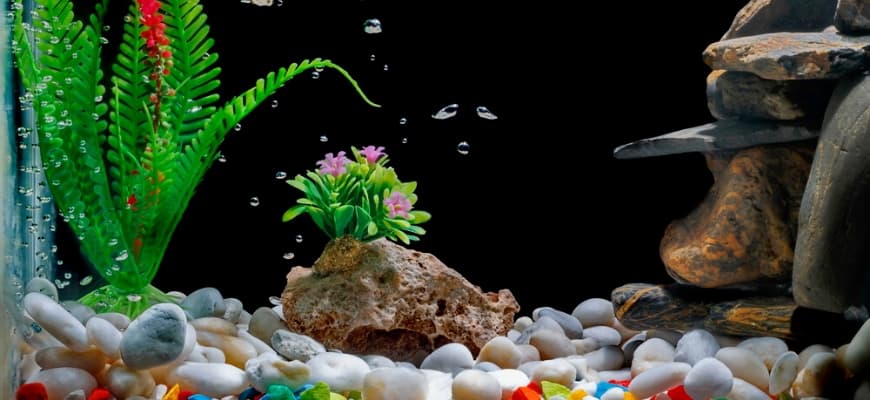
There’s not many drawbacks to using gravel in your freshwater aquarium. It’s an ideal choice for community and planted tanks and lends itself to endless customization.
The main trade-off is these substrates also make it harder to eliminate toxic blue-green algae if you have an outbreak. Sandy substrates usually limit these outbreaks to the surface layer, since water is restricted from flowing through the small sand particles.
In contrast, gravel may permit the algae to grow throughout your substrate, where it can be challenging to treat. This may be a bigger problem with porous types of gravel, but using a UV-sterilizing filter may help prevent these algae outbreaks and other problems with waterborne parasites.
Cleaning and Maintenance
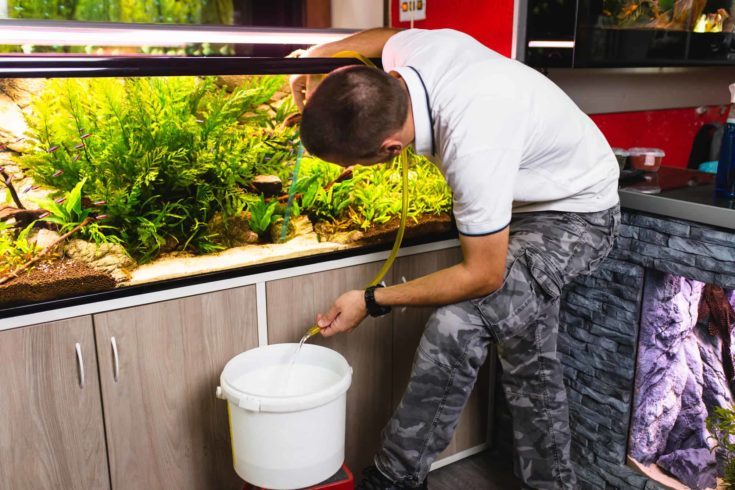
It is easier to maintain a gravel tank than an aquarium with sand. You can set your filter intakes quite low because the gravel is too heavy to get sucked into the filter.
When doing water changes, it’s very easy to vacuum debris without picking up the gravel as well. Gravel tanks often appear tidier and better maintained than their sandy counterparts.
Plant and Animal Considerations
Gravel is the substrate-of-choice for many novices and experienced freshwater fish keepers because it is so broadly suited to raising both aquatic animals and plants. There are really no limits to what you can do with a graveled freshwater aquarium.
Conclusion
It’s not easy to change the substrate in your tank once you’ve established an aquatic community. To avoid problems, pick the substrate that works best for the fish and plants you plan to keep in the tank of your dreams!
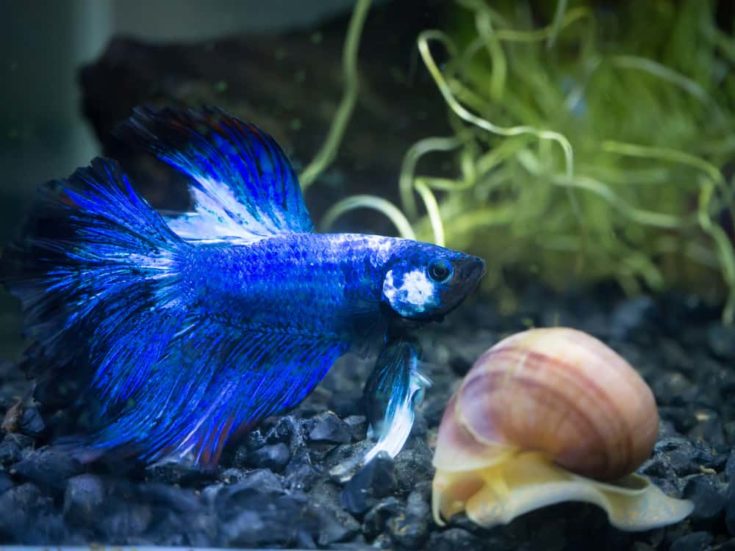
If you’re still not sure which is the better option for your freshwater aquarium, then here’s my advice:
Use Aquarium Sand if:
- You prefer the sandy appearance
- Have a hanging or canister filter
- Want to keep freshwater fish or invertebrates that like to burrow in substrate
- Don’t mind the “messy” appearance of debris on the bottom of the tank
- Not overly concerned about the limitations on growing aquatic plants
- Want to take on the challenges of maintaining a sandy tank environment
Use Gravel if:
- You prefer a tidy-looking tank or the appearance of gravel
- Want a thriving or densely-planted aquarium
- Have an underground filter
- Desire a large variety of substrate sizes and colors to choose between
- You’re unsure which aquatic species you’ll end up with and want to keep options open
- Prefer the ease of maintaining a graveled environment
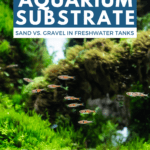
Thanks for the informative to setting up a freshwater aquarium. Having gone through the contents I have gained a lot of knowledge.
Thank you very much Jen. Most helpful and detailed advice for my future 30 gallon tank.